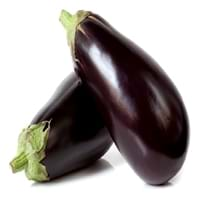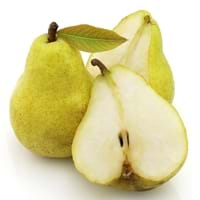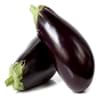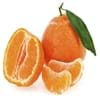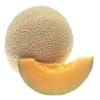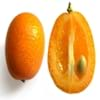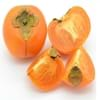Health Benefits
Cancer prevention, Heart care, Reduces blood circulation problems
Arthritis prevention, Cancer prevention, Gout treatment, Heart care
General Benefits
Digestive aid, Fights against infections, Flu treatment, Healing of wounds, Helps in weight loss, Treatment of common cold
Anti-inflammatory properties, Boosts immune system, Controls blood pressure, Controls blood sugar levels, Cures fever, Digestive aid, Sore throat treatment
Skin Benefits
Anti-aging benefits, Brightens and lightens complexion, Skin cleansing, Skin rejuvenation
Reduces wrinkles, Treatment of acne
Hair Benefits
Prevents hair loss, Promotes longer and healthier hair, Protects hair, Rejuvenates scalp
Promotes longer and healthier hair, Shiny hair
Allergy Symptoms
Abdominal pains, Anaphylaxis, Diarrhea, Dizziness, Hives, Itching in tongue and other parts of mouth, Tingling sensation in mouth, Vomiting
Anaphylaxis, Digestive Problems, Itching, Skin Rashes, Swelling
Side Effects
Allergic reaction, Irritation, Nausea, Skin rash, Swelling
Allergic reaction
Best Time to Eat
Along with meal, Don't consume at night and before bed
As a snack in the late afternoon, Don't consume at night and before bed, Eat the fresh ones, avoid mixing with any other foods, don't eat after meal., Morning time (before lunch)
Vitamin A (Retinol)
Not Available
Vitamin B5 (Pantothenic Acid)
Vitamin C (Ascorbic Acid)
Vitamin K (Phyllochinone)
Calories in Fresh Fruit with Peel
Calories in Fresh Fruit without Peel
Not Available
Not Available
Calories in Frozen Form
Not Available
Not Available
Calories in Dried Form
Not Available
Not Available
Calories in Canned Form
Not Available
Not Available
Calories in Jam
Not Available
Calories in Pie
Not Available
Type
Fruit vegetable, Tropical
Tree fruit
Season
Spring, Summer
Autumn, Summer, Winter
Varieties
Black Magic, Black Beauty, Black Bell, Sicilian, Italian, Indian (Baby), Japanese, Chinese and White
Green Anjou, Red Anjou, Bartlett, Red Bartlett, Bosc, Comice, Concorde, Forelle, Seckel and Starkrimson
Color
Black, Green, Pink, Purple, Purplish black
Yellow
Taste
Bitter, Slightly sweet, Spongy
Crunchy, Sweet
Origin
India
China, Japan
Soil Type
Sandy loam
Clayey, Loamy, Sandy
Climatic Conditions
Warm to hot climate
Cold, Hot, Without frosts
Facts about
- In Italy, it's a belief that diet rich in eggplant leads to madness. Hence, they call it a 'crazy apple'.
- Eggplant contains nicotine & can help quit smoking.
- Juice made from its leaves and roots is medicinal.
- The first pear tree was planted in North America in 1620.
- The Chinese considered the pear fruit to be a symbol of immortality.
- This fruit was used as a natural remedy against nausea in ancient Greece.
Other Countries
Egypt, India, Indonesia, Iran, Iraq, Italy, Japan, Spain, Turkey
Argentina, Belgium, India, Italy, Japan, South Africa, Spain, Turkey, United States of America
Top Importer
United States of America
Europe
Botanical Name
Solanum melongena
Pyrus communis
Synonym
Solanum ovigerum or Solanum trongum
Not Available
Subkingdom
Tracheobionta
Tracheobionta
Division
Magnoliophyta
Magnoliophyta
Class
Magnoliopsida
Magnoliopsida
Subclass
Asteridae
Rosidae
Family
Solanaceae
Rosaceae
Species
S. melongena
P. communis
Generic Group
Not Available
Rose
Compare Eggplant and Pear
It is important compare Eggplant and Pear as both the fruits have a different nutritional value. Their comparison can be done on the basis of their vitamin and mineral content, calories, benefits as well as characteristics, making it easier for us to choose the best fruit for our diet. Their general health benefits are as follows:
Eggplant Benefits: digestive aid, fights against infections, flu treatment, healing of wounds, helps in weight loss and treatment of common cold.
Pear Benefits: anti-inflammatory properties, boosts immune system, controls blood pressure, controls blood sugar levels, cures fever, digestive aid and sore throat treatment.
Fruits are also used as a remedy for various hair problems. The hair benefits of Eggplant are: prevents hair loss, promotes longer and healthier hair, protects hair and rejuvenates scalp and hair benefits of Pear are: promotes longer and healthier hair and shiny hair. Some fruits are known to cause allergic reactions. The allergy symptoms of first fruit are: abdominal pains, anaphylaxis, diarrhea, dizziness, hives, itching in tongue and other parts of mouth, tingling sensation in mouth and vomiting and the symptoms of second fruit are: anaphylaxis, digestive problems, itching, skin rashes and swelling. Get sorted Eggplant vs Pear comparison with the help of fruit comparison tool by fruitvs.com.
